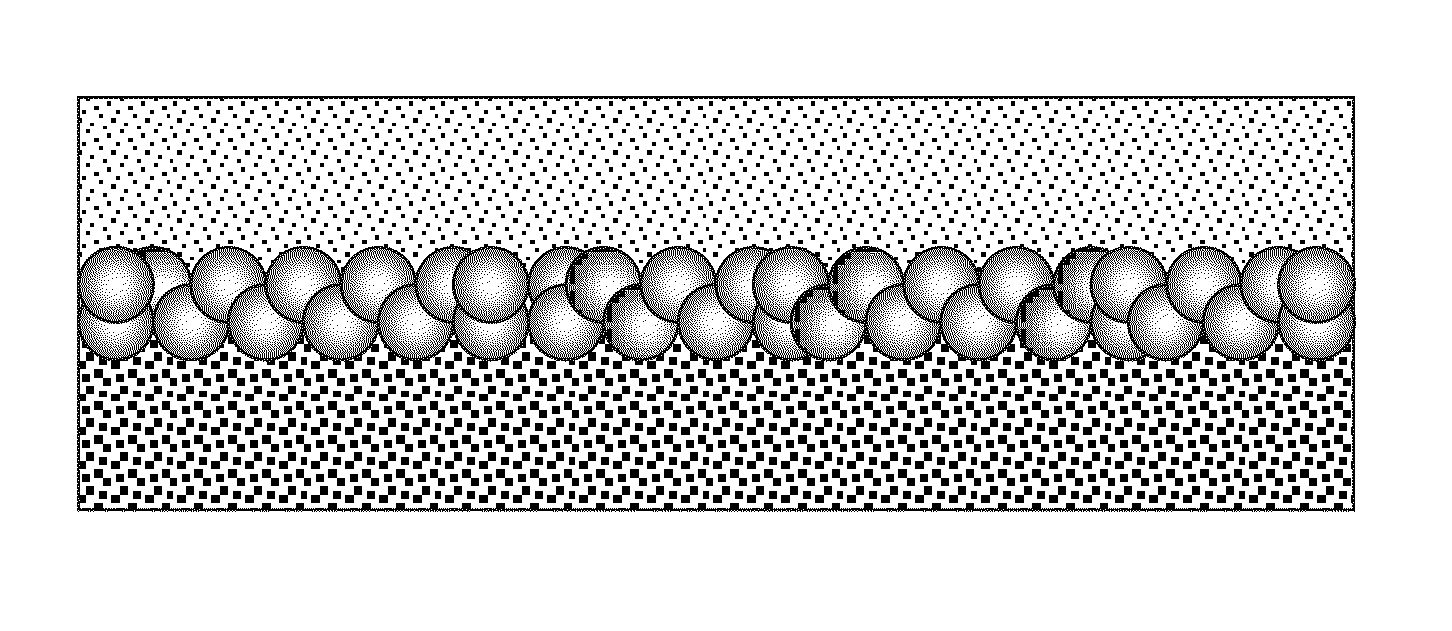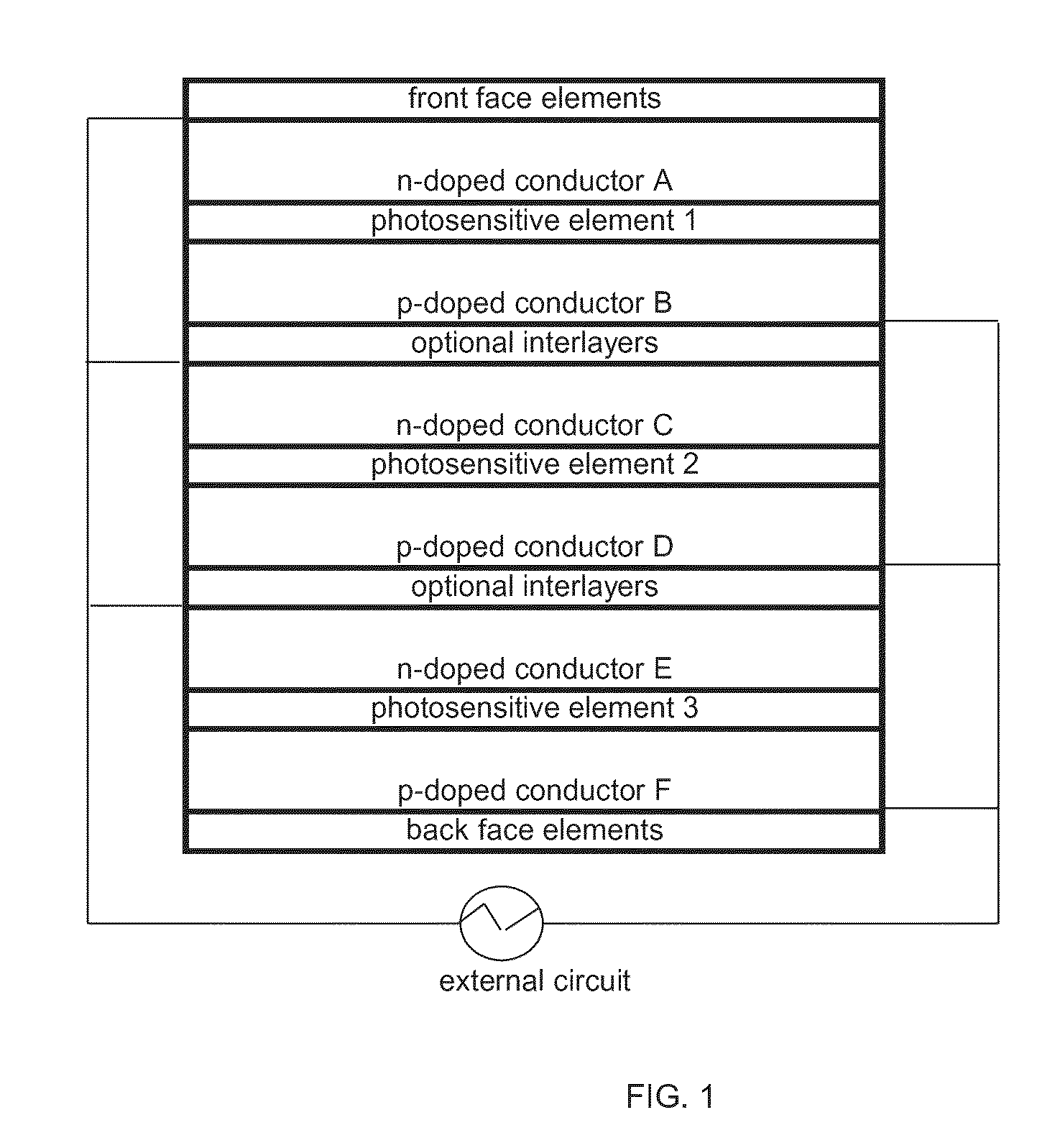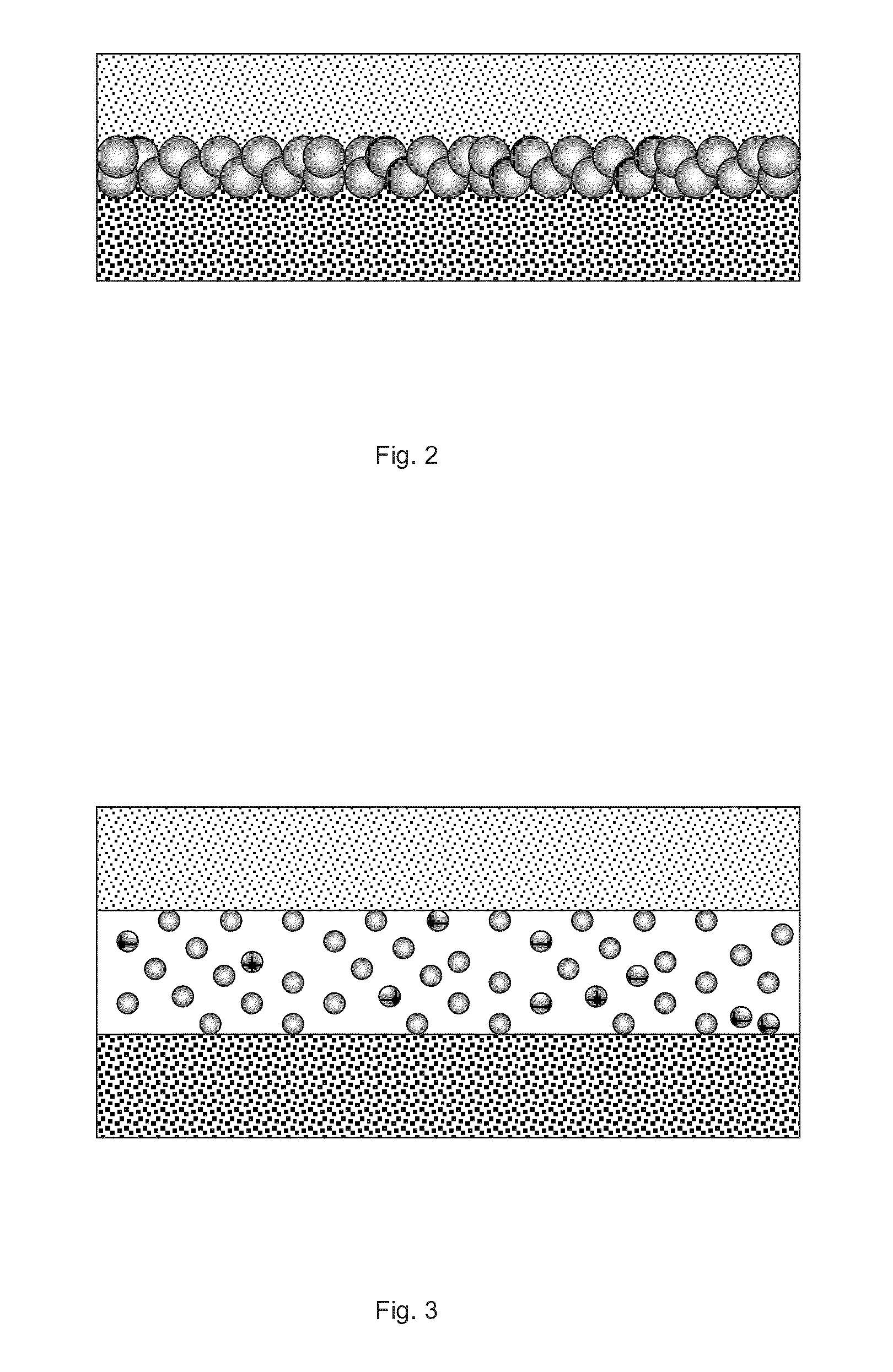Photovoltaic cell
a photovoltaic cell and photovoltaic technology, applied in the field of photovoltaic cells, can solve the problems of physical separation of electron-hole pairs, unsuitable electronic transition, and complex overall cell design
- Summary
- Abstract
- Description
- Claims
- Application Information
AI Technical Summary
Benefits of technology
Problems solved by technology
Method used
Image
Examples
Embodiment Construction
[0015]It has now been found that a photovoltaic cell of high efficiency may be obtained using metallic nanoparticles or nanostructures, which absorb the light through a surface plasmon or polaron mechanism, as the main light absorbing element in the photosensitive layer of the cell. Thus, the present invention pertains to a photovoltaic cell comprising at least one photosensitive layer containing nanoparticles or nanostructures, and additionally comprising at least one n-doped charge transport layer and at least one p-doped charge transport layer per each photosensitive layer, placed on each side of said photosensitive layer, characterized in that[0016]the nanoparticles or nanostructures are the main light absorbing element in the photosensitive layer,[0017]the nanoparticles or nanostructures have metallic conductivity and absorb near infrared, visible and / or ultraviolet light through a surface plasmon or polaron mechanism, and[0018]the nanoparticles or nanostructures have at least ...
PUM
 Login to View More
Login to View More Abstract
Description
Claims
Application Information
 Login to View More
Login to View More - R&D
- Intellectual Property
- Life Sciences
- Materials
- Tech Scout
- Unparalleled Data Quality
- Higher Quality Content
- 60% Fewer Hallucinations
Browse by: Latest US Patents, China's latest patents, Technical Efficacy Thesaurus, Application Domain, Technology Topic, Popular Technical Reports.
© 2025 PatSnap. All rights reserved.Legal|Privacy policy|Modern Slavery Act Transparency Statement|Sitemap|About US| Contact US: help@patsnap.com



